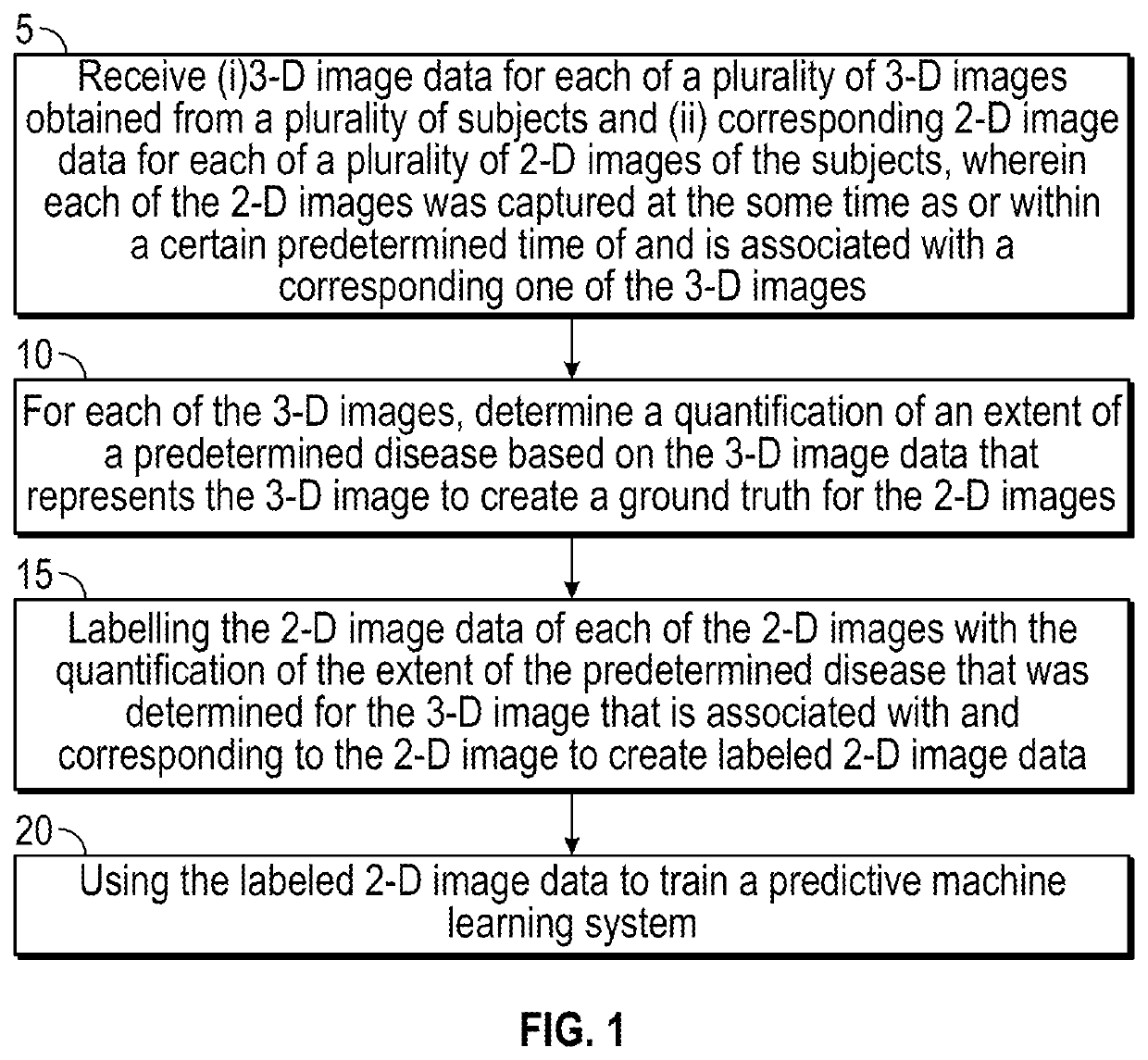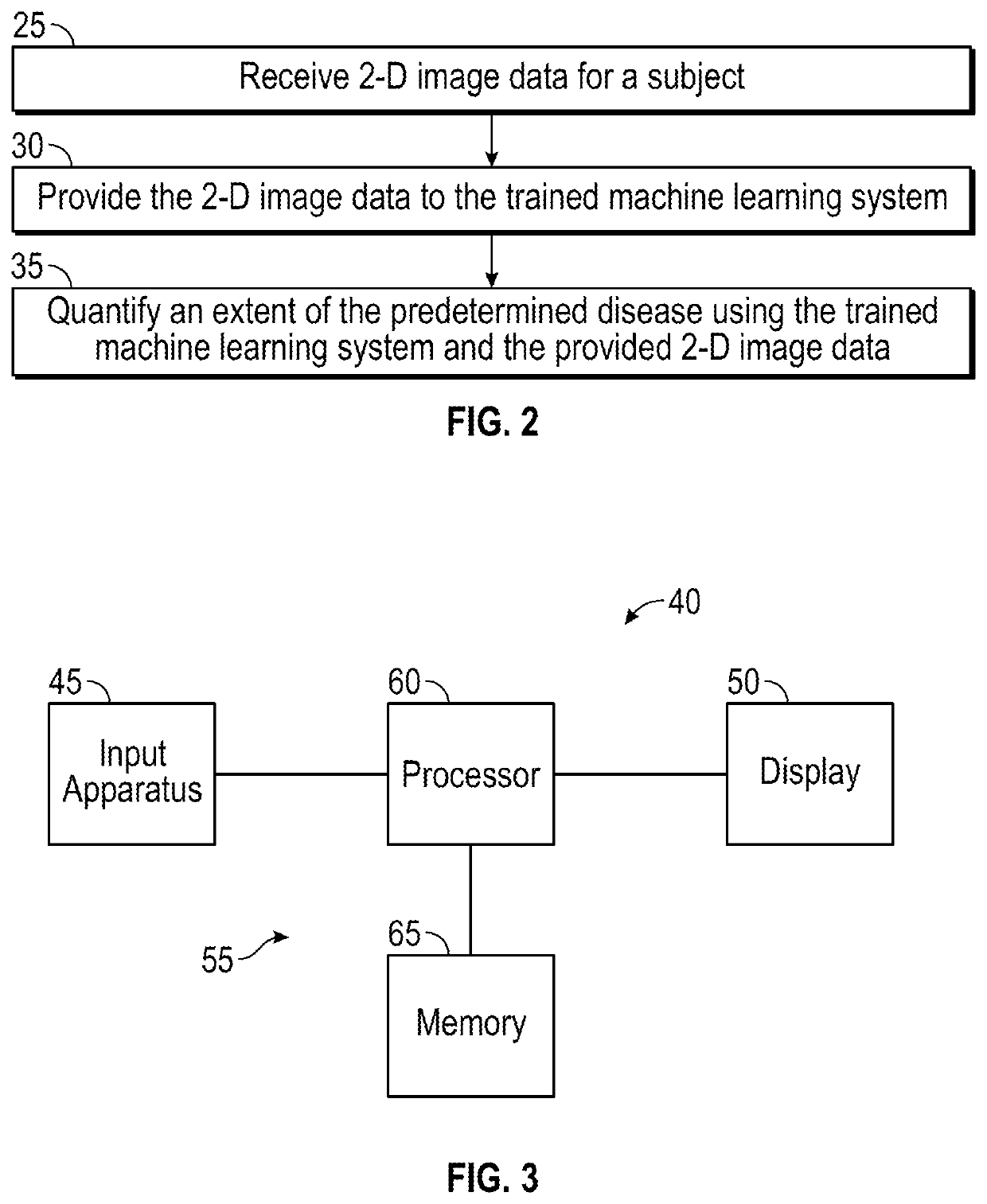System and method for quantifying the extent of disease from 2-d images
a disease and image technology, applied in the field of system and method for assessing the extent/progression of a disease, can solve the problems of inability and death, ct imaging is not typically ordered, and its capability of quantifying the burden of emphysema is limited
- Summary
- Abstract
- Description
- Claims
- Application Information
AI Technical Summary
Benefits of technology
Problems solved by technology
Method used
Image
Examples
Embodiment Construction
[0013]As used herein, the singular form of “a”, “an”, and “the” include plural references unless the context clearly dictates otherwise.
As used herein, the statement that two or more parts or components are “coupled” shall mean that the parts are joined or operate together either directly or indirectly, i.e., through one or more intermediate parts or components, so long as a link occurs.
[0014]As used herein, “directly coupled” means that two elements are directly in contact with each other.
[0015]As used herein, the term “number” shall mean one or an integer greater than one (i.e., a plurality).
[0016]As used herein, the terms “component” and “system” are intended to refer to a computer related entity, either hardware, a combination of hardware and software, software, or software in execution. For example, a component can be, but is not limited to being, a process running on a processor, a processor, an object, an executable, a thread of execution, a program, and / or a computer. By way...
PUM
 Login to View More
Login to View More Abstract
Description
Claims
Application Information
 Login to View More
Login to View More - R&D
- Intellectual Property
- Life Sciences
- Materials
- Tech Scout
- Unparalleled Data Quality
- Higher Quality Content
- 60% Fewer Hallucinations
Browse by: Latest US Patents, China's latest patents, Technical Efficacy Thesaurus, Application Domain, Technology Topic, Popular Technical Reports.
© 2025 PatSnap. All rights reserved.Legal|Privacy policy|Modern Slavery Act Transparency Statement|Sitemap|About US| Contact US: help@patsnap.com


